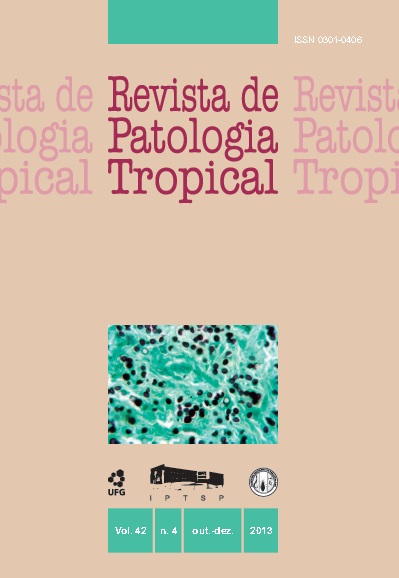Epidemiological study of American cutaneous leishmaniasis in the State of Goias, Brazil, 2007-2009
DOI:
https://doi.org/10.5216/rpt.v42i4.27925Keywords:
Leishmaniasis, epidemiology, epidemiological monitoring servicesAbstract
The American cutaneous leishmaniasis is a serious public health problem in many countries. This study aimed to survey descriptive epidemiological characteristics of the disease in the State of Goias between the years 2007 and 2009. This study consisted of retrospective descriptive research based on data reported to and registered in the Information System for Notifiable Diseases. The study showed the distribution of autochthonous cases by municipality, showing the spread of the disease in the state, thus, 1,285 confirmed cases of cutaneous leishmaniasis were reported, from which 848 cases were autochthonous, in 130 municipalities. In 2007, 233 cases were reported in 75 municipalities, in 2008 there were 276 cases in 81 municipalities and in 2009 there were 349 cases in 85 municipalities. These data suggest a slight upward trend of cases and a wide geographical distribution. There was a predominance of cases involving individuals who inhabited urban areas, were male, of mixed race and with less than high school education. The results of this search suggest further investigation of the causes of these infections, thus justifying the importance of this study, since it provides data that may support programs aimed at prevention of this type of infection.Downloads
Downloads
How to Cite
Issue
Section
License
The manuscript submission must be accompanied by a letter signed by all authors stating the full name and email address, confirming that the material has not been published or is under consideration for publication elsewhere, and agreeing to transfer copyright in all media and formats for Journal of Tropical Pathology. The authors will not be paid for published articles. They are solely responsible for the content of those articles, even if the Editor holds the right to adjust them to the norms of the journal.
The reviewers will not be paid for the peer review process.

